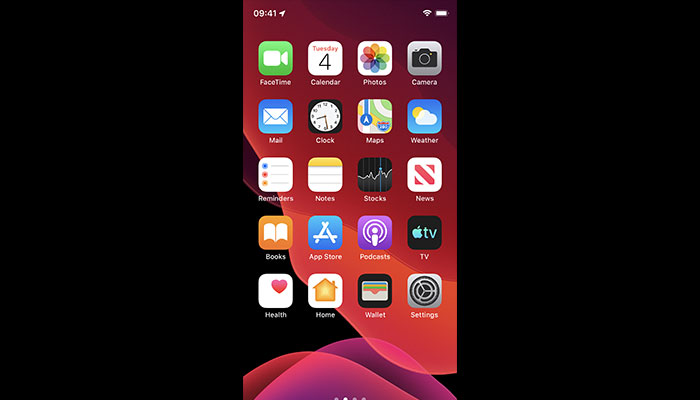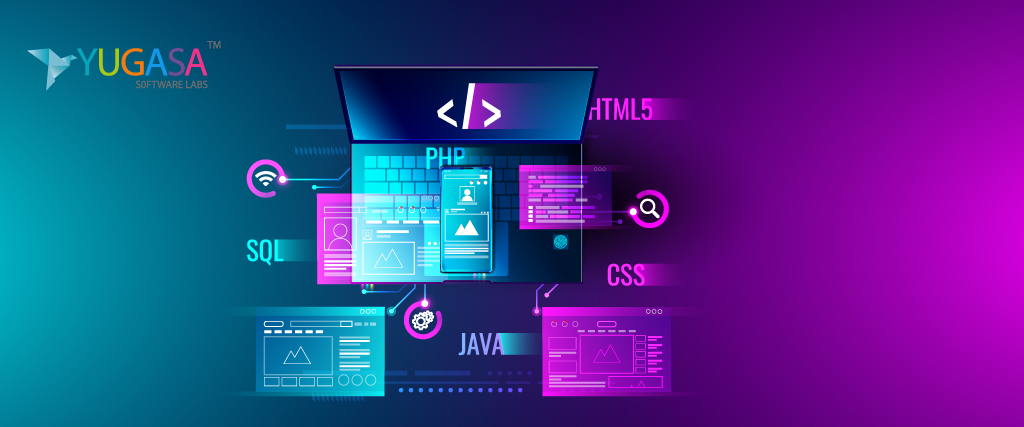PWA vs Native App 2020: There are plenty of solutions for app development in the market. And this often leads to a dilemma of choosing the right paradigm to work with. “Should I work with a native application or should I develop a web application?” is a question that has become difficult to answer. With mobile devices becoming more and more reliable and widespread of app stores that encourage developers to create and present their work to a bigger audience, the choice has become both difficult and important.
The line separating native and web application has grown shorter over the years. Web apps seem to get plenty of performance and feature improvements. While the native apps have become a lot more accessible with frameworks like React Native and Flutter.

If you are among those developers who are confused between the two choices, this article tries to give a proper description of both paradigms and puts forward their merits and demerits so you can choose the ideal way to develop your application.
Native App
Native apps run on your device without any necessity for external sources like the web. They are platform-specific, i.e., they run on a single platform like iOS or Android.
They can even be device-specific. They are made in such a way that they can properly utilize the resources of the devices they run on.
Distribution platforms like App Store and Play Store have made the native apps very popular and mainstream. It is because of them that native apps have been mainstream for the past decade or so.
Advantages of native Apps
A well-optimized native app can have many advantages over PWAs (Progressive Web Apps). The most important one is the offline functionality. Native apps triumph over PWAs when it comes to working without any internet connections. The way they are designed is such that any necessary resource is already included in the package itself.
PWA vs Native App 2020 – User interface and User experience
Native apps are developed with a device’s hardware specification in mind. This allows them to make the most out of a device. It also makes the user experience better because the interface is smoothly combined with the device.
In cases like mobile games or messengers, speed and interface are key factors. A minor bug or low page load speed can have a huge impact on the user experience. Native apps specialize in this domain and thus have an advantage over PWAs.
Distribution
It has been established that mobile users spend most of their time in apps, not on the web. This makes native apps more popular. Furthermore, a native app has distribution points, such as Play Store and App store, which give them a vast user base. An app can become popular there based on various factors such as customer ratings, number of downloads, app category, etc. There are also various app search optimization tactics that allow your apps to show in the search results at higher positions based on their relevance to the searched key terms.
Security
A native app is more secured as compared to a web app. Nowadays, security is considered as a major factor while developing any app. The major app distribution stores require all native apps to have proper security features and any app which fails the guidelines will not be allowed to be on the app stores. Apple’s app store is notoriously famous for its high-security standards for any app which is uploaded to the app store. Even Google’s play store has good security barriers which the apps which filter any badly implemented apps.
Disadvantages of native apps
Despite all the advantages native apps present, they are not perfect. They also have certain disadvantages which include the following:
Cost of app development
The main disadvantage of native apps is the development cost factor. If you wish to have an app that has cross-platform support, you would have to develop the app for all the individual platforms. A native app requires a different set of UI toolkit to suit different platforms.
Furthermore, each platform has its various languages that you can use to develop an app-specific to that platform. So, to develop an app for more than one platform you will need to have knowledge of these multiple languages which itself can be tedious. And any updates will have to be done separately on all the codebases which take time and effort.
Luckily, there is a way to overcome this by using the Flutter framework, which allows you to create both iOS and Android apps with a single code base. But flutter is still relatively new and thus has lesser resources and developers as compared to more mainstream languages like Java, Kotlin, and Swift.
Distribution related issues – PWA vs Native App 2020
Distribution through the popular stores is not easy. The stores often put very harsh constraints on the apps. You have to focus on quality control of your application. If an update has bugs, there is no way to roll back that update once it has been pushed on the store.
Mistakes can often sneak into your work and every time that happens you have to take measures to fix those problems as soon as possible or your app ratings will suffer. This can sometimes create pressure on the developer as he/she has to drop other works to make a patch for the issue and push it to the store.
Security-related issues
Any native app which handles a user’s personal information has to make sure it strictly follows certain guidelines and protects the user’s data from any breach. The developers need their apps to have secure and protected data handling techniques. While not extremely difficult to do, this can often be tricky. Many apps are rejected because of poor user data handling or even a small issue with the way it works.
Progressive Web Apps
PWA or Progressive Web App is a web page or website which uses similar features to a mobile app and provides pretty much the same user experience as a mobile application. A PWA is accessible via a browser.
Progressive in PWA is for the iterative implementation of advanced features on a pre-existing website. This shouldn’t break the core functionality of a website or a web app. Instead, it improves or builds upon the core functionality. PWA can be built on top of an existing web service.
The key component of any PWA is a service worker. It is a JavaScript code which handles requests and transactions between the server and user. A service worker can retrieve data faster than a server and can also provide limited offline functionality.
There is a difference between a simple website and a PWA. PWA can perform offline by caching all the necessary elements, can send push notifications and have an interface similar to a native app.
PWA vs Native App 2020 – Advantages of PWAs
Progressive Web Apps can be reused for different platforms. You can use the same functionality and interface template for Android, iOS and even desktop.
Cost of development
The major benefit of using PWA is development ease. It is cheap, simple, and quick as compared to the native app development. It is also a lot easier to maintain the website and add support whenever needed. A bug in PWA doesn’t cause as much trouble as it does in the case of native apps. This is because it is easy to enable or disable any feature in a web app in case it requires maintenance. A single update fixes the issue for all users of the Web App.
Developing a web app doesn’t cost too much because of these two main reasons. One, one code base can work with all platforms as a browser can adjust on all phone sizes easily. Two, finding good JavaScript and JSON (scripts used to develop PWAs) developers is not a difficult task. In fact, one can even learn these themselves to be self-sufficient.
Security
Google requires the use of HTTPS to run on chrome properly. PWA is secure as it works over HTTPS which allows for browser-to-server encryption. As long as the website owner follows this protocol, the chances of personal data attacks are very low. Because of this, handling user data becomes safer and easier too.
Advertising
PWAs allows for a simpler way to have targeted ads and audience coverage. The same basic principles which are used by most websites are valid for web apps also.
Additional benefits
There is no lack of libraries, elements and assets for web development online. Premade templates are readily available for free to be used for developers. This reduces the development time and eases the developer.
PWAs are very fast to install and access without any need for intermediates, like app stores. They provide high-performance rates.
Also, PWAs have better customer retention.
Disadvantages of PWAs
Even though PWAs provide many valuable benefits, they also have certain disadvantages which can prove difficult when developing a web app.
Limited offline functionality
The major drawback of a web app is that it requires a good internet connection. While there are certain features that allow little offline functionality, it is still very limited as compared to a native app. Also, page loading time is a crucial factor for any web app, and often times developers are limited by the constraints from browsers.
Also, PWA uses browser cache for memory storage. This adds a certain limitation to how much memory a web app can consume. Web apps with massive memory needs thus face performance issues. This can also cause security issues for some PWAs.
Gaming
This is possibly the most troublesome thing to work on a web app. Any decent game requires proper utilization of a device’s hardware resources. Native apps are better at hardware utilization as compared to web apps. Moreover, the inherent network latency can also play a crucial role in how well the game performs.
Conclusion
PWA vs Native App 2020 – Is PWA the future?
There is little doubt that PWAs will be taking over the native apps in the future. Low cost and ease of development and implementation will influence more and more the spreading of this technology. There is even a possibility that it may replace native applications completely.
With further development, PWA can become a perfect combination of a native app and a website. But that promise is still quite far away.
How to choose one of these?
After considering the pros and cons of both paradigms, we can create scenarios for when to use Native apps and when PWAs are more beneficial.
Situations where native apps can perform better are:
- Responsive and reliant apps
- Better UI customization and User experience
- Offline functionality
- Apps with high-security needs for the finance and banking sector.
- Resource heavy and hardware needing apps like videogames, VR, AR, video chats and messengers.
Read More: HOW WILL LIVE STREAMING APPS CHANGE THE FUTURE OF THE EDUCATION INDUSTRY?
Situations where web apps can perform better are:
- Cost and time effective development
- Marketing apps
- No Store restrictions
- Easy multiplatform development
- Easy app adaptability
Before making the final choice between a web app or a native app, analyze your goals and figure out what additional functionality you want to offer to your user. If it isn’t very demanding, it makes more sense to go with a web app.
On the other hand, native apps will be more suitable for games and other resource-intensive and offline tasks.























